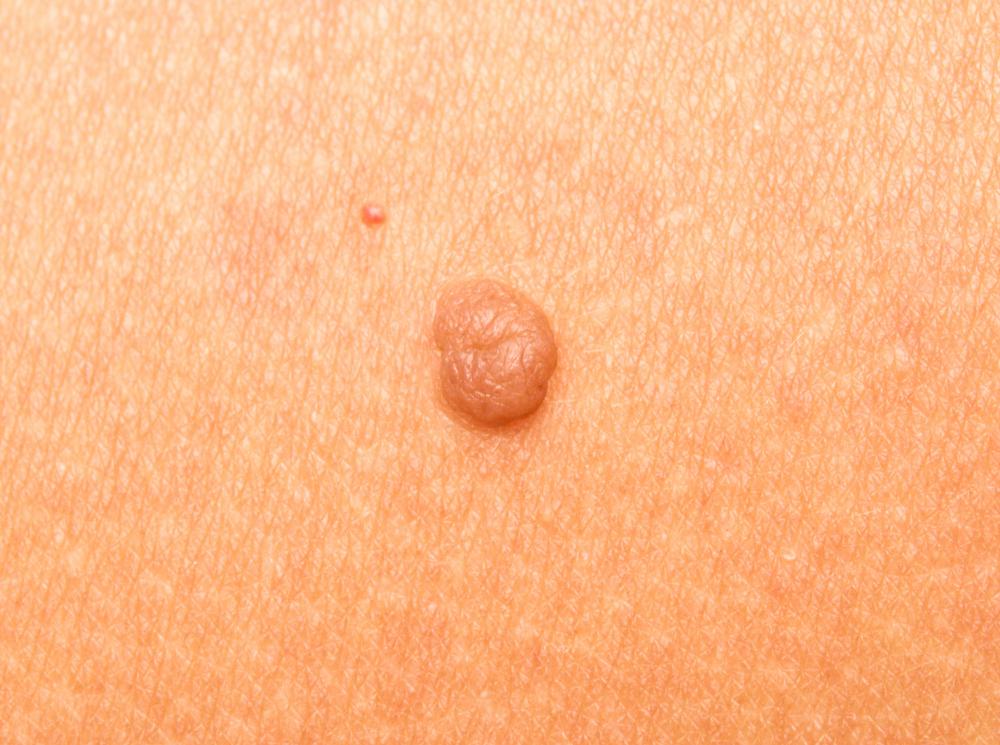At WiseGEEK, we're committed to delivering accurate, trustworthy information. Our expert-authored content is rigorously fact-checked and sourced from credible authorities. Discover how we uphold the highest standards in providing you with reliable knowledge.
How Do I Choose the Best Treatment for Skin Tags?
Although most skin tags are benign and do not cause any physical pain, many people find them to be aesthetically displeasing. As a result, there are various forms of treatment for skin tags. Some common options include cutting them off using scissors, tying off the bottom using string or undergoing a surgical procedure. Choosing the ideal treatment for skin tags will ultimately depend on the severity and the individual's personal preference.
One of the more traditional methods for removing skin tags involves using a pair of scissors. First, the scissors are dipped in peroxide in order to sterilize them. Then the skin tag is pulled back slightly with a pair of tweezers, and the scissors are used to cut off the skin tag. Usually there will be some bleeding involved, so a sterile pad should be on hand to quickly stop the blood flow. Finally, a bandage with antibiotic ointment is placed over the area until it heals.
Typically, this method works best on simple cases where there are only a few small skin tags. The benefit of using scissors is that it can be done at home for free. The drawback is that there is a mild level of pain involved.

Another popular treatment for skin tags makes use of either a thin string or dental floss. Basically, the string is tightly tied at the bottom of the skin tag and left alone. Doing this automatically stops the blood flow that the skin tag needs to survive. As a result, the tag should fall off on its own after approximately two or three days. Once it falls off, an antibiotic ointment should be placed on the area to prevent infection.
Like the scissors method, using string is usually best for mild cases. It's beneficial because it saves money when compared to professional treatment. The drawback is that the process takes a few days to complete.

An additional form of treatment for skin tags involves having them professionally removed through some form of surgery. Some of the primary options include freezing them or by laser removal. Procedures such as these are often done at a dermatologist's office, and are usually intended for more severe cases. Professional removal is mainly for people experiencing large quantities of skin tags, or excessively large skin tags. Sometimes a numbing anesthesia is also used if significant pain is likely to involved.
The benefits of this option are that it's usually very quick and safe. The problem is that it's much more expensive than removing skin tags at home. In addition, scarring can sometimes occur after the skin tags have been removed.
AS FEATURED ON:
AS FEATURED ON:
















Discuss this Article
Post your comments